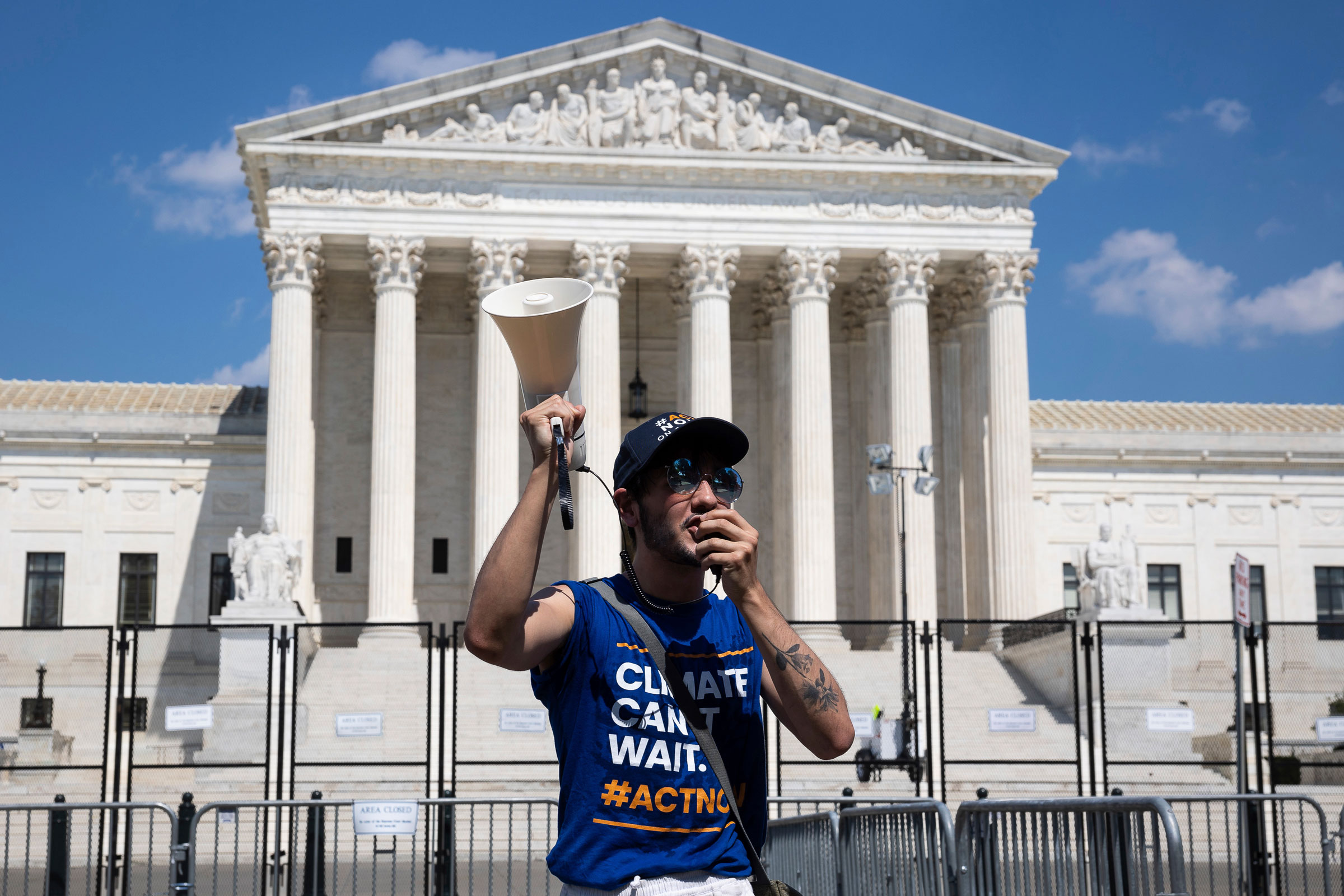
One of the most urgent challenges we face, as a nation, is to confront the mounting costs and existential dangers of climate change. It’s a daunting task the Supreme Court just made harder.
In a ruling Thursday, the Court set new constraints on what the U.S. Environmental Protection Agency may do to cut the carbon pollution that’s driving the climate crisis. As a result, the agency has fewer options for curbing those emissions from the nation’s largest industrial source—power plants that burn coal and gas.
This is hardly the time to hamstring the nation’s environmental guardian in the environmental fight of our lives, but that’s what the Court’s conservative majority has done.
The decision, though, does far more damage than that.
After striking down a woman’s right to choose to have an abortion and making it harder to protect our communities from gun violence, the Court’s conservative majority has issued yet another ruling that reaches deep into the everyday lives of ordinary Americans in ways that will have profound and lasting impacts.
This time, in West Virginia v. the EPA, the Court erected a new barrier to limit the agency’s ability to cut carbon pollution from the nation’s power plants.
The Court did not dispute that the EPA can set standards that require power companies to install pollution controls on individual coal plants to cut those emissions. But the Court’s decision did block the agency from writing rules that directly mandate a shift to cleaner forms of power, such as wind and solar.
Congress expressly assigned the EPA, in the Clean Air Act, both the authority and the duty to limit carbon pollution and other greenhouse gases that are driving the climate crisis.
The science is clear: we must cut these emissions in half by 2030, and stop adding them to the atmosphere altogether, by 2050, to avert a climate catastrophe. It’s part of the EPA’s core mission to help make sure we get there.
Read more: What the Supreme Court’s Ruling on the ‘Clean Air Act’ Means for Carbon Emissions
The real-world problem is that power plants that burn coal and gas account for about a third of the nation’s carbon footprint. We’ve got to clean up these dirty plants to confront the widening climate crisis. Effective EPA standards must be part of the fix. The agency should gather consumer groups, power company executives, frontline communities and other stakeholders immediately, propose rules by year’s end, and finalize them in early 2023. The climate clock is ticking.
The impact of the Court’s decision is likely to extend far beyond environmental protections, raising potential challenges to the ability of all federal agencies, not just the EPA, to write the rules and standards we’ve depended on for more than a century to protect the public safety, health, and general welfare.
That’s because the Court drew on a legal theory called “major questions.” Under this doctrine, the Court held that without clear and explicit language from Congress, the EPA cannot write a rule that would force a national transition away from the use of coal because that would have economic and political significance too vast for agency rulemaking.
But, as we and others argued in a brief we filed in support of EPA’s authority, Congress did provide the agency clear directions, in the Clean Air Act, giving “EPA tools to address climate-altering air pollution,” in the expectation that the agency would do just that.
That’s exactly how the process is designed to work.
Under the Constitution, Congress passes federal laws and the executive branch implements them, through the work of federal agencies. These agencies, not Congress, and not the Supreme Court, house and curate the expertise—legal, scientific, technical, and other—required to write the detailed rules and standards necessary to carry out the laws as Congress directs. If an agency oversteps its bounds, Congress is the first to know and it is fully empowered to respond.
Read more: How the Biden Administration Is Responding to the SCOTUS Climate Setback
The “major questions” doctrine is a construct made up by interests that seek to cripple the government’s ability to protect the public from emerging and existing risks. Or, as Justice Elena Kagan put it in her dissenting opinion, “Prevent agencies from doing important work, even though that is what Congress directed.”
Kagan added that the “Court appoints itself – instead of Congress or the expert agency – the decision-maker on climate policy. I cannot think of many things more frightening.”
Thursday’s ruling throws up for grabs, not only EPA’s ability to protect the environment, but potentially many other standards and rules the public relies on to ensure access to safe homes and workplaces; keep dangerous food and harmful drugs off the counter; provide secure financial markets; protect our savings; and much more.
The Court’s majority isn’t protecting the separation of powers: it is arrogating power the Constitution expressly assigns to the legislative and executive branches. The result isn’t more clarity, but more of the kind of confusion that can invite endless legal challenges and paralyze the government’s ability to protect the public from emerging threats.
Defending the public from hazard and harm is a vital function of good governance in a modern society. This ruling strikes at the heart of our ability to provide it.
More Must-Reads from TIME
- Cybersecurity Experts Are Sounding the Alarm on DOGE
- Meet the 2025 Women of the Year
- The Harsh Truth About Disability Inclusion
- Why Do More Young Adults Have Cancer?
- Colman Domingo Leads With Radical Love
- How to Get Better at Doing Things Alone
- Michelle Zauner Stares Down the Darkness
Contact us at letters@time.com